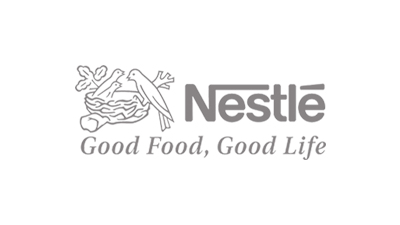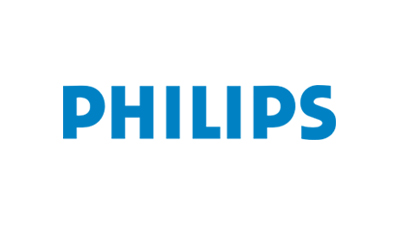Liquefied natural gas (LNG) is natural gas (predominantly methane, CH4) that has been converted to liquid form for ease of storage or transport. LNG is an attractive fuel choice for many vessels because it exceeds the air quality standards set forth. It takes up about 1/600th the volume of natural gas in the gaseous state. It is odorless, colorless, non-toxic and non-corrosive. Hazards include flammability after vaporization into a gaseous state, freezing and asphyxia. The liquefaction process involves removal of certain components, such as dust, acid gases, helium, water, and heavy hydrocarbons, which could cause difficulty downstream. The natural gas is then condensed into a liquid at close to atmospheric pressure by cooling it to approximately ?162 ?C (?260 ?F); maximum transport pressure is set at around 25 KPa (4 psi). LNG Bunkering is a particular type of operation where LNG fuel is transferred from a given distribution source to a LNG fuelled ship. It involves the participation of different stakeholders, from the ship-side, LNG supplier, ports, safety personnel, administrations and policy makers. In this report, LNG bunkering only refers to LNG bunkering fuel. The International Maritime Organization has established regulations on the fuel sulphur content of ship fuels and set mandatory NOx emission limits for new-build engines. These regulations are implemented through the IMO?s International Convention for the Prevention of Pollution from Ships (MARPOL). In addition to these engine and fuel requirements, certain areas have also been designated as emission control areas where stricter emissions limits are enforced. Besides air quality measures the IMO is also introducing instruments to monitor and reduce GHG emissions from shipping. Since the COVID-19 virus outbreak in December 2019, the disease has spread to almost 100 countries around the globe with the World Health Organization declaring it a public health emergency. The global impacts of the coronavirus disease 2019 (COVID-19) are already starting to be felt, and will significantly affect the LNG Bunkering 3900 market in 2020. COVID-19 can affect the global economy in three main ways: by directly affecting production and demand, by creating supply chain and market disruption, and by its financial impact on firms and financial markets. The outbreak of COVID-19 has brought effects on many aspects, like flight cancellations; travel bans and quarantines; restaurants closed; all indoor events restricted; over forty countries state of emergency declared; massive slowing of the supply chain; stock market volatility; falling business confidence, growing panic among the population, and uncertainty about future. This report also analyses the impact of Coronavirus COVID-19 on the LNG Bunkering 3900 industry. Based on our recent survey, we have several different scenarios about the LNG Bunkering 3900 YoY growth rate for 2020. The probable scenario is expected to grow by a xx% in 2020 and the revenue will be xx in 2020 from US$ 3325 million in 2019. The market size of LNG Bunkering 3900 will reach xx in 2026, with a CAGR of xx% from 2020 to 2026. With industry-standard accuracy in analysis and high data integrity, the report makes a brilliant attempt to unveil key opportunities available in the global LNG Bunkering market to help players in achieving a strong market position. Buyers of the report can access verified and reliable market forecasts, including those for the overall size of the global LNG Bunkering market in terms of both revenue and volume. Players, stakeholders, and other participants in the global LNG Bunkering market will be able to gain the upper hand as they use the report as a powerful resource. For this version of the report, the segmental analysis focuses on sales (volume), revenue and forecast by each application segment in terms of sales and revenue and forecast by each type segment in terms of revenue for the period 2015-2026. Sales and Pricing Analyses Readers are provided with deeper sales analysis and pricing analysis for the global LNG Bunkering market. As part of sales analysis, the report offers accurate statistics and figures for sales and revenue by region, by each type segment for the period 2015-2026. In the pricing analysis section of the report, readers are provided with validated statistics and figures for the price by players and price by region for the period 2015-2020 and price by each type segment for the period 2015-2020. Regional and Country-level Analysis The report offers an exhaustive geographical analysis of the global LNG Bunkering market, covering important regions, viz, North America, Europe, China and Japan. It also covers key countries (regions), viz, U.S., Canada, Germany, France, U.K., Italy, Russia, China, Japan, South Korea, India, Australia, Taiwan, Indonesia, Thailand, Malaysia, Philippines, Vietnam, Mexico, Brazil, Turkey, Saudi Arabia, UAE, etc. The report includes country-wise and region-wise market size for the period 2015-2026. It also includes market size and forecast by each application segment in terms of sales for the period 2015-2026. Competition Analysis In the competitive analysis section of the report, leading as well as prominent players of the global LNG Bunkering market are broadly studied on the basis of key factors. The report offers comprehensive analysis and accurate statistics on sales by the player for the period 2015-2020. It also offers detailed analysis supported by reliable statistics on price and revenue (global level) by player for the period 2015-2020. On the whole, the report proves to be an effective tool that players can use to gain a competitive edge over their competitors and ensure lasting success in the global LNG Bunkering market. All of the findings, data, and information provided in the report are validated and revalidated with the help of trustworthy sources. The analysts who have authored the report took a unique and industry-best research and analysis approach for an in-depth study of the global LNG Bunkering market. The following manufacturers are covered in this report: Gasum Shell (Gasnor) Equinor Barents Naturgass Engie Bomin and Linde Eni Norge Harvey Gulf Polskie LNG Korea Gas Corp Gaz Metro LNG Bunkering Breakdown Data by Type Truck-to-Ship Ship-to-Ship Port-to-Ship Others LNG Bunkering Breakdown Data by Application Container Vessels Tanker Vessels Bulk & General Cargo Vessels Ferries & OSV Others
1 Study Coverage 1.1 LNG Bunkering Product Introduction 1.2 Market Segments 1.3 Key LNG Bunkering Manufacturers Covered: Ranking by Revenue 1.4 Market by Type 1.4.1 Global LNG Bunkering Market Size Growth Rate by Type 1.4.2 Truck-to-Ship 1.4.3 Ship-to-Ship 1.4.4 Port-to-Ship 1.4.5 Others 1.5 Market by Application 1.5.1









